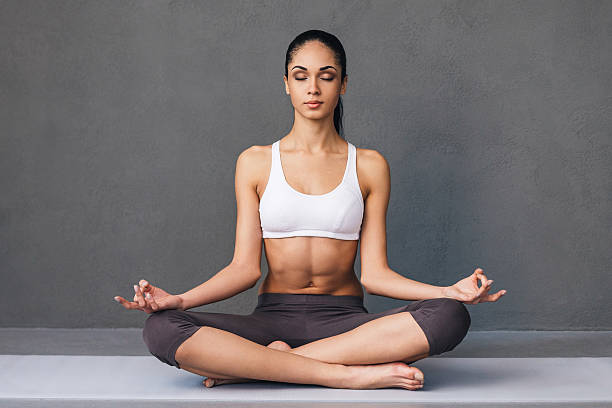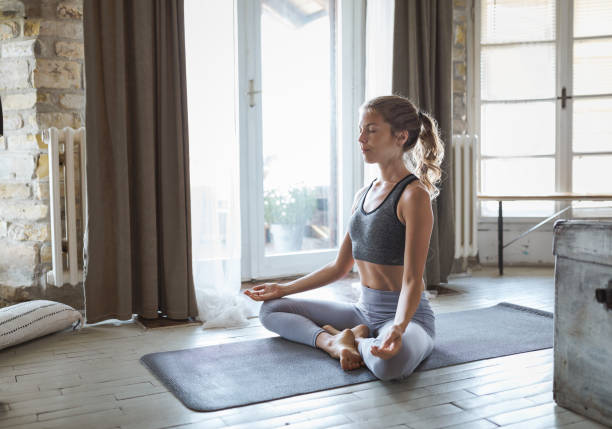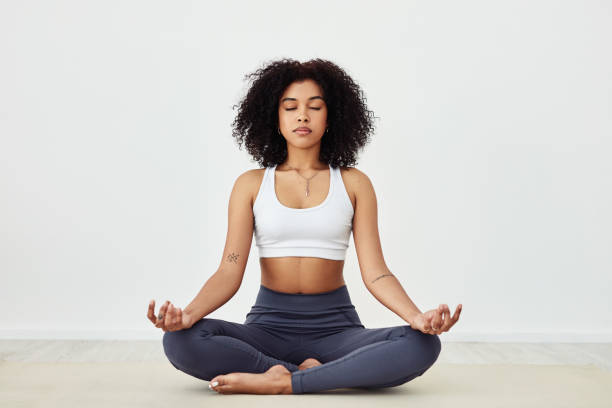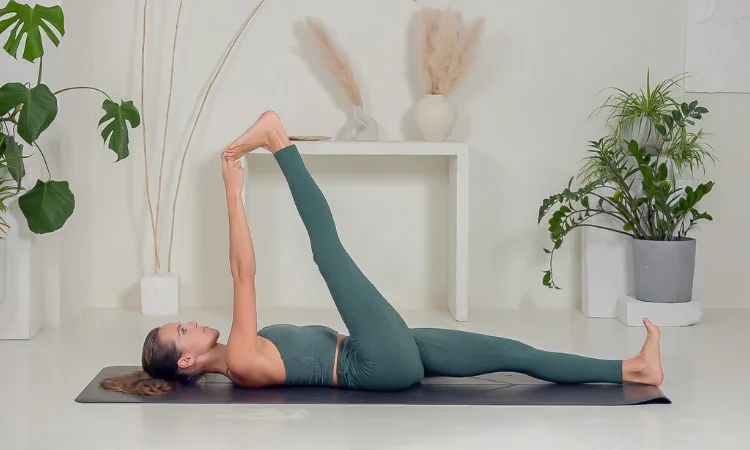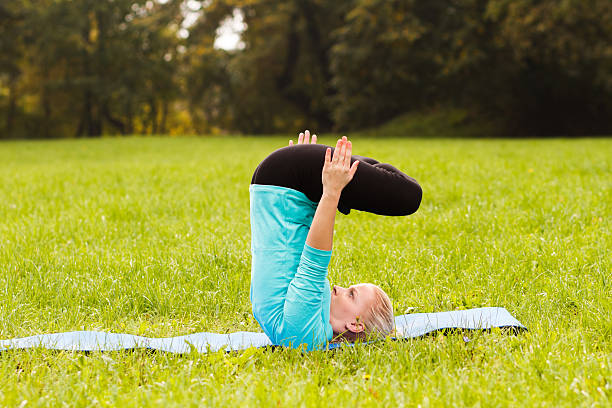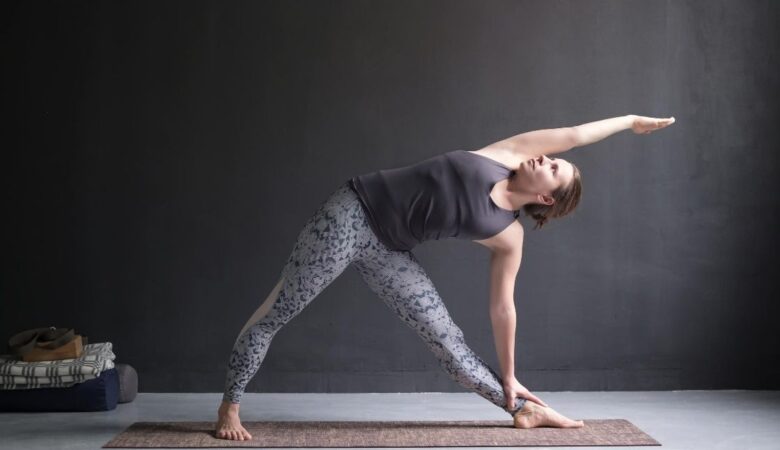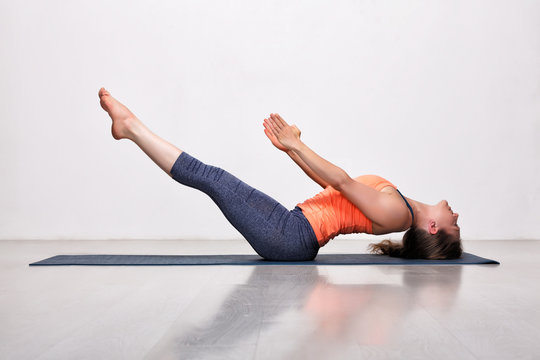Practicing yoga daily is very beneficial to keep the body healthy and away from diseases. It is advisable to practice different yoga poses for different parts of the body. One of these is Padmasana. Practicing Padmasana gives many benefits to the body, and it is considered a very easy yogasana.
Table of Contents
What Is Padmasana Or Lotus Pose?
Padmasana is a classical seated yoga posture that holds immense significance in both physical yoga practices and spiritual traditions. Commonly known as the Lotus Pose, it is a symbol of inner peace, enlightenment, and purity.
Practicing Lotus Pose not only benefits your body but also keeps your mind calm. On the occasion of this International Yoga Day, Onlymyhealth has brought a special series for you in which we will tell you in detail about 1 yogasana daily from the famous yoga guru Grand Master Akshar. Both yoga and pranayama work to make the body fit and healthy.
Under this, today we will tell you in detail about the benefits of Lotus Pose, the method of practice and precautions. Padmasana is one of those yogasanas, the practice of which also helps in removing many diseases of the body. Let us know about Padmasana in detail.
Padmasana literally means the lotus posture, as the arrangement of the legs resembles the petals of a lotus flower. The lotus is a powerful symbol in Indian philosophy, representing purity rising above worldly attachments.
- Padma (Sanskrit) = Lotus
- Asana = Posture or seat
In Lotus Pose, the legs are crossed and placed on opposite thighs with the soles facing upward. The spine remains erect, and the hands rest on the knees in a meditative mudra (gesture). This pose promotes physical stability and mental stillness, making it ideal for:
- Meditation (Dhyana)
- Pranayama (breath control)
- Chanting or Mantra recitation
Purpose and Significance:
Spiritual:
- It is said to open the chakras, especially Muladhara (root) and Sahasrara (crown).
- It helps in transcending the body consciousness, allowing the practitioner to enter deeper meditative states.
Philosophical:
-
The lotus grows in muddy water but blooms above the surface, unstained. Likewise, Lotus Pose encourages detachment and spiritual awakening amidst worldly distractions.
Preparation Before Practicing Padmasana:
Before attempting Padmasana, prepare the body with stretches and warm-up exercises, particularly targeting the hips, knees, and ankles. Ideal preparatory poses include:
- Baddha Konasana or Butterfly Pose
- Ardha Matsyendrasana or Half Spinal Twist
- Janu Sirsasana or Head-to-Knee Forward Bend
- Sukhasana or Easy Pose
Step-by-Step Method of Practicing Padmasana
Padmasana, also known as the Lotus Pose, is one of the most recognized and revered poses in the yogic tradition. Symbolizing spiritual awakening and purity, this meditative posture is commonly used in yoga and meditation practices to promote physical stability, mental clarity, and inner peace.
Sit on the Ground:
Sit on the yoga mat with legs extended forward (Dandasana). Keep the spine erect, shoulders relaxed, and palms resting beside the hips.
Position the Right Foot:
Bend the right knee, and gently place the right foot on the left thigh, with the sole facing upward. The heel should be close to the lower abdomen.
Position the Left Foot:
Bend the left knee, and lift the left foot onto the right thigh, with the sole also facing upward. Both knees should touch the ground (or come as close as comfortably), forming a symmetrical lotus shape.
Adjust the Hands:
Place the hands on the knees in Jnana Mudra (thumb and index finger touching) or Chin Mudra, with palms facing upward. Alternatively, keep hands in Anjali Mudra (prayer pose) in the lap.
Maintain the Posture:
Close your eyes gently. Keep the spine erect, head straight, and shoulders relaxed.
Breathe slowly, deeply, and rhythmically. Focus on the breath or a point of concentration (mantra, third eye, etc.).
Duration of Practice:
- Beginners: Start with 1–2 minutes.
- Advanced practitioners: Sit comfortably for 15–30 minutes or more.
- Gradually increase the duration as flexibility and comfort improve.
Benefits of Practicing Padmasana:
Padmasana is also known as Lotus Pose in English. Many yogis and meditators meditate by sitting in the Lotus Pose. Meditating while sitting in Lotus Pose is also very useful. Practicing Lotus Pose daily makes the body healthy as well as calms the mind, and benefits in many mental problems. By practicing Padmasana, you can get rid of these diseases.
Beneficial In Arthritis and Related Diseases:
By practicing Lotus Pose regularly, you get a lot of benefit in knee-related problems. The practice of Lotus Pose is very beneficial for the problem of arthritis, but in this case, patients must consult a doctor before practicing Padmasana. Regular practice of Padmasana causes leakage of a liquid from your knees, which is very beneficial for problems related to it.
Beneficial in Sleep-Related Problems:
Practicing Lotus Pose daily gives you a lot of benefits in removing sleep-related diseases. In today’s time, people are falling prey to sleep-related diseases or problems due to a hectic lifestyle and stress, etc. To deal with this situation, one must practice Lotus Pose daily. Practicing Padmasana daily is very beneficial for the problem of sleeplessness.
Beneficial in the Problem of Acidity, Constipation, and Indigestion:
Practicing Lotus Pose daily gives a lot of benefits in the problem of constipation, indigestion, and acidity. Lotus Pose must be practiced daily to strengthen the digestive system. By practicing this, your digestive system improves, and your body gets relief from these problems.
Beneficial in Mental Problems:
People also practice the Lotus Pose while meditating. Practicing Lotus Pose daily is considered very beneficial to overcome mental problems like stress, depression, and anxiety etc.
Beneficial In Regulating Blood Pressure:
Practicing Padmasana is very beneficial for blood pressure problems. It’s regular practice to regulate blood pressure. By keeping blood pressure in the body under control, you are less at risk of heart disease.
Variations:
- Ardha Padmasana or Half Lotus Pose: One leg on the opposite thigh, the other underneath.
- Siddhasana or Accomplished Pose: An Easier alternative with both heels aligned under the perineum.
- Baddha Padmasana or Locked Lotus Pose: A deeper variation with arms wrapped behind the back, holding the toes.
Precautions:
- Not suitable for people with: Knee, ankle, or hip injuries, Sciatica or arthritis
- Should not be forced. Flexibility should be developed gradually.
- Beginners should use props or try easier poses before attempting full Lotus Pose.
Conclusion:
Padmasana is more than just a physical yoga pose; it’s a symbol of stillness, stability, and spiritual blossoming. With patience and practice, it becomes a gateway to deeper meditative states and inner harmony.
FAQ:
Q. What is Padmasana?
A. Padmasana, or Lotus Pose, is a classical seated yoga posture where each foot is placed on the opposite thigh. It is widely used for meditation, breathwork (pranayama), and promoting physical and mental stillness.
Q. Who can practice Padmasana?
A. It is suitable for intermediate and advanced practitioners. Beginners should work gradually with hip-opening stretches and may start with easier versions like Ardha Padmasana or Sukhasana.
Q. What are the main benefits of Padmasana?
A.
- Promotes mental calmness and concentration
- Opens hips and strengthens lower limbs
- Improves posture and spinal alignment
- Supports deeper meditation and breathing practices
- Enhances circulation in the pelvic region
Q. Is Padmasana safe for everyone?
A. No. It should be avoided by individuals with:
- Knee, hip, or ankle injuries
- Sciatica or arthritis
- Recent surgery or joint replacements
Always consult a healthcare professional if you have medical conditions.
Q. What should I do if I feel pain while doing Padmasana?
A. Stop immediately. Pain (especially sharp or in the knees) is a sign that your body isn’t ready for the pose. Switch to simpler seated postures and build flexibility gradually.
Q. Can I meditate in another posture if I can’t do Padmasana?
A. Absolutely. Alternatives include:
Even sitting in a chair with an upright spine can be used for meditation.
Q. How long should I stay in Padmasana?
A. Beginners should start with 1–2 minutes. With regular practice and increased comfort, it can be held for 15–30 minutes or longer during meditation sessions.
Q. Is it necessary to place the right foot first?
A. Traditionally, placing the right foot first (on the left thigh) is believed to stimulate spiritual energy, but it’s not mandatory. You can alternate legs for balance and comfort.
Q. Why do my legs go numb in Padmasana?
A. Numbness may result from:
- Poor circulation due to tight hips or misalignment
- Sitting too long without support
- Compression of nerves
Use props, limit duration, and stretch before and after to prevent this.
Q. Can Padmasana help activate chakras?
A. Yes. Yogic texts suggest Lotus Pose helps activate the Muladhara (Root) and Sahasrara (Crown) chakras, supporting energetic balance and spiritual growth.

